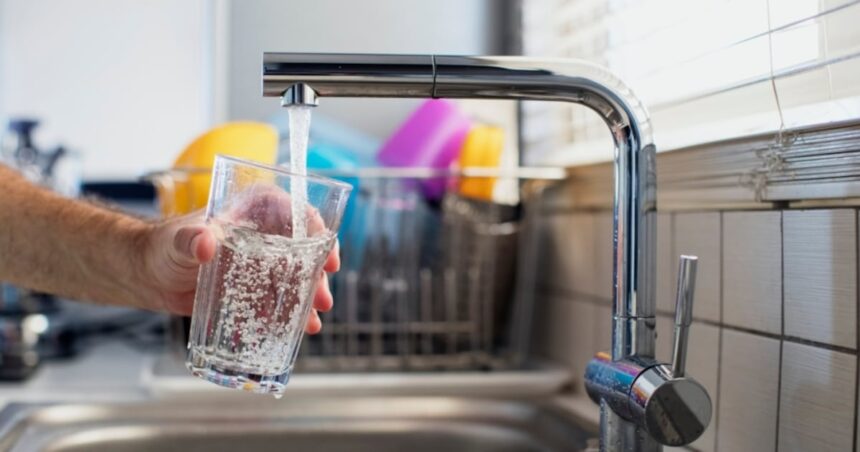The water flowing from Annie Clearwater’s kitchen tap today is different than it was yesterday. It now contains 0.7 parts per million of fluoride—an amount invisible to the eye but the subject of a twelve-year debate in Calgary that officially ended this week.
“I’ve been waiting for this since they took it out,” says Clearwater, a dental hygienist and mother of three, as she fills a glass with tap water in her Bridgeland home. “I’ve seen the difference in my patients’ teeth, especially children from lower-income families who can’t afford regular dental care.”
On Monday, the City of Calgary officially reintroduced fluoride to its drinking water supply, ending a contentious chapter that began in 2011 when city council voted to remove it despite public health recommendations. The decision makes Calgary the latest Canadian municipality to reconsider its stance on water fluoridation, a practice endorsed by Health Canada, the World Health Organization, and the Canadian Dental Association.
The $30.1 million infrastructure project to reintroduce fluoride was completed ahead of schedule and under budget, according to city officials. The fluoridation equipment has been installed at the Bearspaw and Glenmore water treatment plants, which serve Calgary’s population of approximately 1.6 million residents.
Dr. Juliet Guichon, a bioethicist at the University of Calgary and president of Calgarians for Kids’ Health, has advocated for fluoride’s return since its removal. “This is a victory for public health and for equity,” she tells me as we meet at a downtown coffee shop. “The evidence from the last twelve years has been clear—dental health outcomes worsened without fluoridation, particularly among children.”
A 2016 study published in the Community Dentistry and Oral Epidemiology journal showed that Calgary children had more cavities than their counterparts in Edmonton, where water remained fluoridated. The research found a 65 percent increase in cavities for Calgary’s primary teeth during the period following fluoride removal.
For the Wong family in the city’s northeast, the return of fluoride brings relief. “My older children grew up with fluoridated water and had almost no cavities,” says Michelle Wong, watching her youngest play at a Marlborough Park playground. “But my seven-year-old, born after they removed it, has needed five fillings already. Our dentist told us the difference was striking.”
The reintroduction follows a 2021 plebiscite where nearly 62 percent of Calgary voters supported restoring fluoride to the water supply. City council approved the measure shortly after, though implementation required significant infrastructure investments and construction time.
But not everyone welcomes fluoride’s return. At a farmers’ market in Kensington, I meet Gerald Hoffman, who has opposed water fluoridation for decades. “People should have a choice about what goes in their bodies,” he argues, arranging organic produce at his stand. “I’ll be going back to bottled water or installing expensive filters.”
The controversy around fluoridation reflects broader tensions between public health initiatives and personal choice. Dr. Cora Constantinescu, a pediatric infectious disease specialist who studies public health hesitancy, sees parallels with other health measures.
“Whether it’s vaccines, mask mandates, or water fluoridation, we’re seeing the same patterns of mistrust in public health institutions,” she explains during our conversation at the Foothills Medical Centre. “What’s interesting about fluoride is that we have decades of data showing both its safety and effectiveness, yet opposition persists.”
Calgary’s fluoride concentration of 0.7 parts per million aligns with Health Canada’s recommended level, adjusted downward from earlier standards as research showed this lower concentration provides dental benefits while minimizing potential risks of dental fluorosis, a cosmetic condition that can cause faint white streaks on teeth.
For Dr. Rafael Figueiredo, a dentist who serves low-income patients at the CUPS Dental Clinic, the change couldn’t come soon enough. “We’ve been overwhelmed with preventable decay cases since fluoride was removed,” he tells me while preparing to see patients. “Water fluoridation is one of the few public health measures that actually reduces health inequities instead of widening them.”
The clinic’s waiting room is full on the Tuesday morning I visit—many patients seeking relief from dental pain that Dr. Figueiredo says might have been prevented with fluoridated water. “The people who opposed fluoride typically had dental insurance and regular care,” he notes. “It wasn’t their children suffering the consequences.”
Indigenous communities surrounding Calgary may also benefit from the city’s decision. “Many of our members come into the city for work and school, bringing water back to their homes,” explains Tsuut’ina Nation health director Sarah Eagle Plume. “Access to preventive dental care remains a challenge on many reserves, so fluoridated water represents an important health support.”
Across Canada, approximately 39 percent of residents receive fluoridated water, according to the Canadian Association of Public Health Dentistry—a figure that has fluctuated as municipalities have added or removed fluoridation over the decades.
Windsor, Ontario restored fluoride to its water supply in 2022 after a five-year hiatus, while Quebec City has consistently rejected fluoridation proposals despite having some of the highest cavity rates in the province.
As I leave Annie Clearwater’s home, she offers a parting thought: “Twelve years is a long time to fight for something as simple as adjusting mineral content in water. But some children will grow up with stronger teeth because people didn’t give up.”
For Calgary, the quiet flow from taps across the city now carries with it both a public health intervention and the culmination of years of scientific and social debate—an invisible change with visible consequences for the next generation of smiles.






